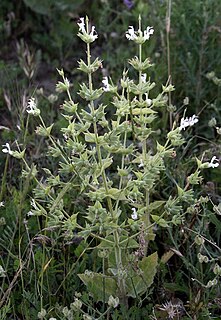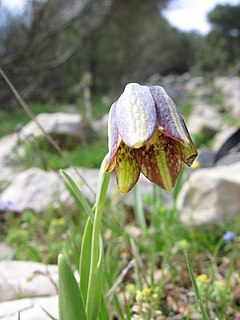
The Euphrates is the longest and one of the most historically important rivers of Western Asia. Together with the Tigris, it is one of the two defining rivers of Mesopotamia. Originating in Turkey, the Euphrates flows through Syria and Iraq to join the Tigris in the Shatt al-Arab, which empties into the Persian Gulf.

Kurdistan is a roughly defined geo-cultural territory in Western Asia wherein the Kurdish people form a prominent majority population and the Kurdish culture, languages, and national identity have historically been based. Geographically, Kurdistan roughly encompasses the northwestern Zagros and the eastern Taurus mountain ranges.

The Tigris–Euphrates river system is a large river system in Western Asia which discharges into the Persian Gulf. Its principal rivers are the Tigris and Euphrates along with smaller tributaries.

The Treaty of Sèvres was a 1920 treaty signed between the Allies of World War I and the Ottoman Empire. The treaty ceded large parts of Ottoman territory to France, the United Kingdom, Greece, and Italy, as well as creating large occupation zones within the Ottoman Empire. It was one of a series of treaties that the Central Powers signed with the Allied Powers after their defeat in World War I. Hostilities had already ended with the Armistice of Mudros.

Ajuga, also known as bugleweed, ground pine, carpet bugle, or just bugle, is a genus of 40 species annual and perennial herbaceous flowering plants in the Ajugeae tribe of the mint family Lamiaceae, with most species native to Europe, Asia, and Africa, but also two species in southeastern Australia. They grow to 5–50 cm tall, with opposite leaves.

Alopecurus, or foxtail grass, is a common and widespread genus of plants in the grass family. It is common across temperate and subtropical parts of Eurasia, northern Africa, and the Americas, as well as naturalized in Australia and on various islands.

Nigella sativa is an annual flowering plant in the family Ranunculaceae, native to eastern Europe and western Asia, but naturalized over a much wider area, including parts of Europe, northern Africa and east to Myanmar.

The Atatürk Dam, originally the Karababa Dam, is a zoned rock-fill dam with a central core on the Euphrates River on the border of Adıyaman Province and Şanlıurfa Province in the Southeastern Anatolia Region of Turkey. Built both to generate electricity and to irrigate the plains in the region, it was renamed in honour of Mustafa Kemal Atatürk (1881–1938), the founder of the Turkish Republic. The construction began in 1983 and was completed in 1990. The dam and the hydroelectric power plant, which went into service after the upfilling of the reservoir was completed in 1992, are operated by the State Hydraulic Works (DSİ). The reservoir created behind the dam, called Lake Atatürk Dam, is the third largest in Turkey.

The Ilısu Dam is a concrete-face rock-fill dam on the Tigris near the village of Ilısu and along the border of Mardin and Şırnak Provinces in Turkey. It is one of the 22 dams of the Southeastern Anatolia Project and its purpose is hydroelectric power production, flood control and water storage. When operational, the dam will support a 1,200 MW power station and will form a 10.4 billion m3 reservoir. Construction of the dam began in 2006 and was originally expected to be completed by 2016. As part of the project, the much smaller Cizre Dam is to be constructed downstream for irrigation and power. The dam has drawn international controversy, because it will flood portions of ancient Hasankeyf and necessitate the relocation of people living in the region. Because of this, the dam lost international funding in 2008. Most historical structures in Hasankeyf were moved to the new Hasankeyf prior to the filling of the dam. The dam began to fill its reservoir in late July 2019. Due to rainfall, the dam has achieved water levels up to 100m above the river bed and stored 5 billion cubic meters of water. The water level had reached an elevation of 498.2m on 1 April 2020.
Enka İnşaat ve Sanayi A.Ş. is a Turkish engineering and construction company based in Istanbul. Enka provides construction and engineering services through its subsidiaries in approximately 30 countries across the world. As of 2017, Enka was the largest construction company in Turkey.
Zingeria is a genus of Asian and European plants in the grass family. Their native range covers the Black Sea and eastern Mediterranean regions from Romania to Kazakhstan.
Crithopsis is a genus of plants in the grass family, native to the Mediterranean and nearby areas.

Ventenata is a genus of plants in the grass family, native to Europe, North Africa, and central + southwest Asia. One species, Ventenata dubia, is considered an invasive weed in many places.

Salvia macrosiphon is a species of flowering plant in the mint family, Lamiaceae. It is native to Iraq, Iran, Pakistan, Afghanistan, Transcaucasia, and Turkey, where it grows at the edges of fields. It is a perennial herb with a white corolla and ovate nutlets. It flowers in May and fruits from June onwards. Although the plant is similar to S. spinosa, it differs in that it has narrower leaves and calyces, is less indurate and has less spiny fruiting calyces, and possesses a longer corolla tube.
Water supply and sanitation in Iraq is characterized by poor water and service quality. Three decades of war, combined with limited environmental awareness, have destroyed Iraq's water resources management system. Thus, Iraq faces difficulties to realize the target of 91% of households using safe drinking water supply by 2015. Currently, 16% of households report daily problems with supply and 20% use an unsafe drinking water source. Furthermore, animal waste and septic tanks pollute the drinking water network.(11)

Rudaw Media Network, also known as Rudaw, is a media group in Kurdistan Region, Iraq. It publishes in Sorani, Kurmanji, English, Arabic and Turkish. Rudaw Media Network also owns a weekly newspaper in the Sorani dialect with a circulation of 3,000, a Kurmanji version published in Europe, a website in Kurdish, English, Arabic and Turkish and a satellite TV station. The network is funded and supported by Rudaw Company and aims to impart news and information about Kurdistan and the Middle East.
Cyclotrichium is a genus of plants in the Lamiaceae, first described as a genus in 1953. The entire genus is endemic to southwestern Asia.
- Cyclotrichium depauperatum(Bunge) Manden. & Scheng. - western Iran
- Cyclotrichium glabrescens(Boiss. ex Rech.f.) Leblebici - southeastern Turkey
- Cyclotrichium haussknechtii(Bunge) Manden. & Scheng. - western Iran
- Cyclotrichium leucotrichum(Stapf ex Rech.f.) Leblebici - Iran, Iraq, Turkey
- Cyclotrichium longiflorumLeblebici - Iran, Iraq, Turkey
- Cyclotrichium niveum(Boiss.) Manden. & Scheng - eastern Turkey
- Cyclotrichium origanifolium(Labill.) Manden. & Scheng. - Lebanon, Syria, southern Turkey
- Cyclotrichium stamineum(Boiss. & Hohen.) Manden. & Scheng. - Iraq, Turkey
- Cyclotrichium straussii(Bornm.) Rech.f. - western Iran

Fritillaria crassifolia is a Middle Eastern species of bulb-forming flowering plant in the lily family Liliaceae, native to Iran, Iraq, Turkey, Syria, and Lebanon.
Asperula xylorrhiza is a species of flowering plant in the family Rubiaceae. It is endemic to Turkey and Iraq.
Allium anacoleum is a plant species in the amaryllis family and is native to Turkey and Iraq.












